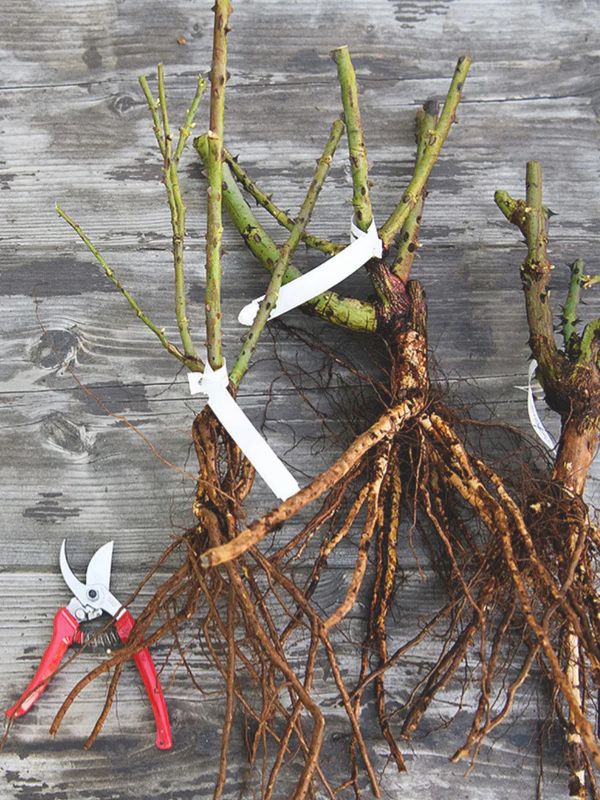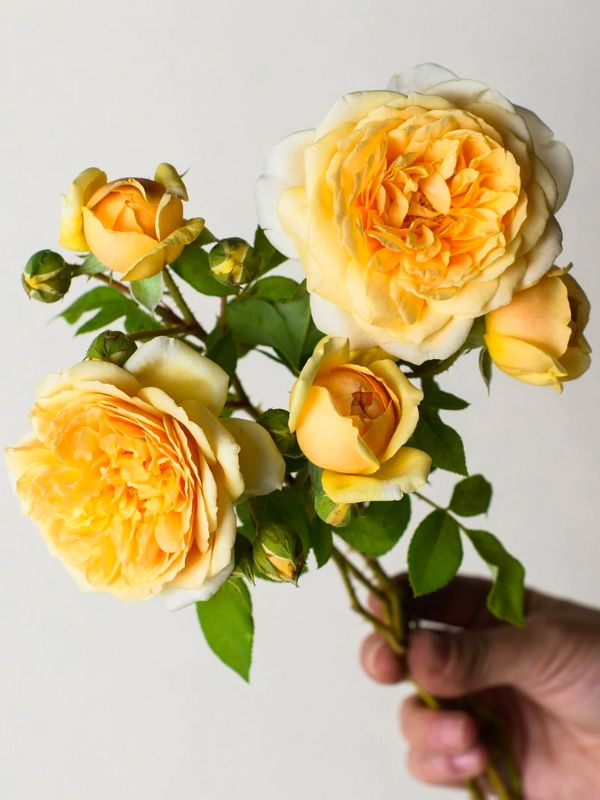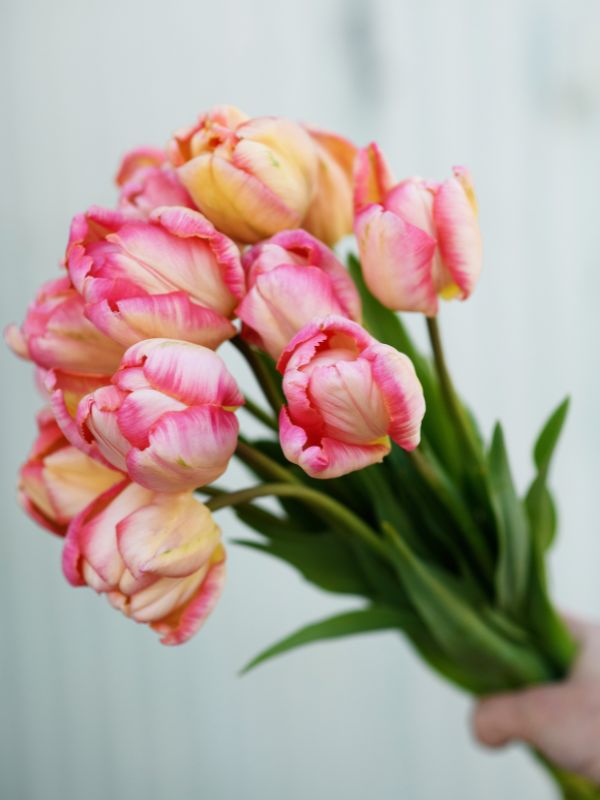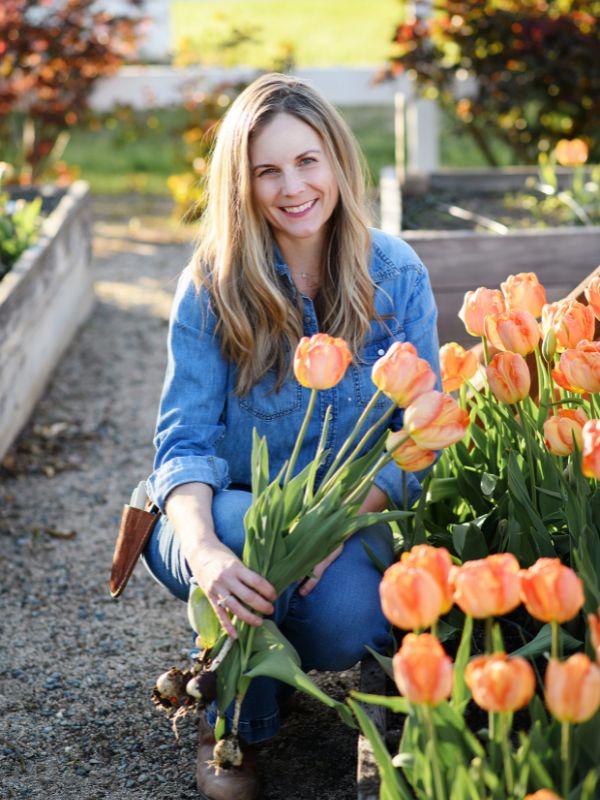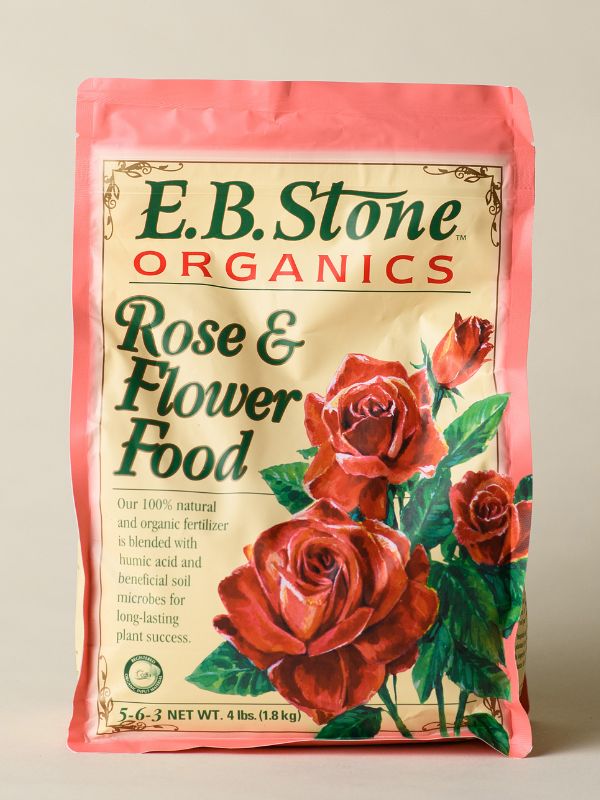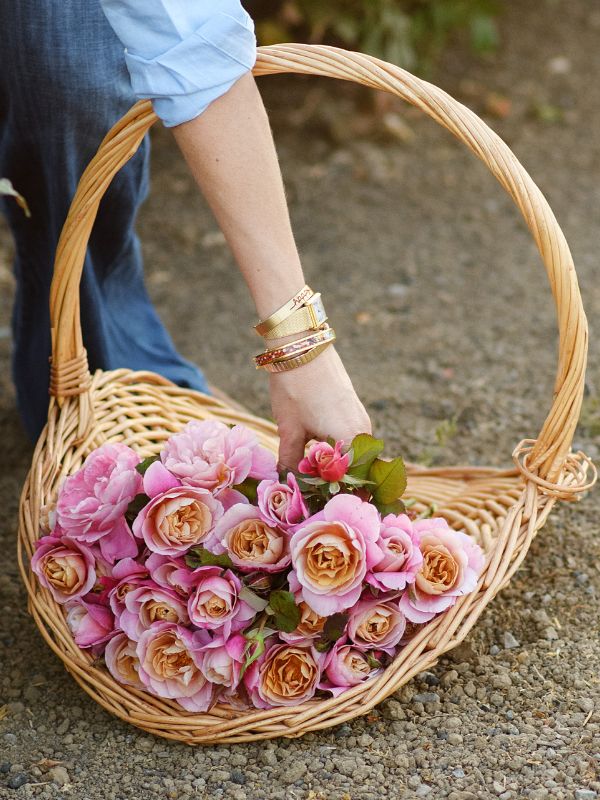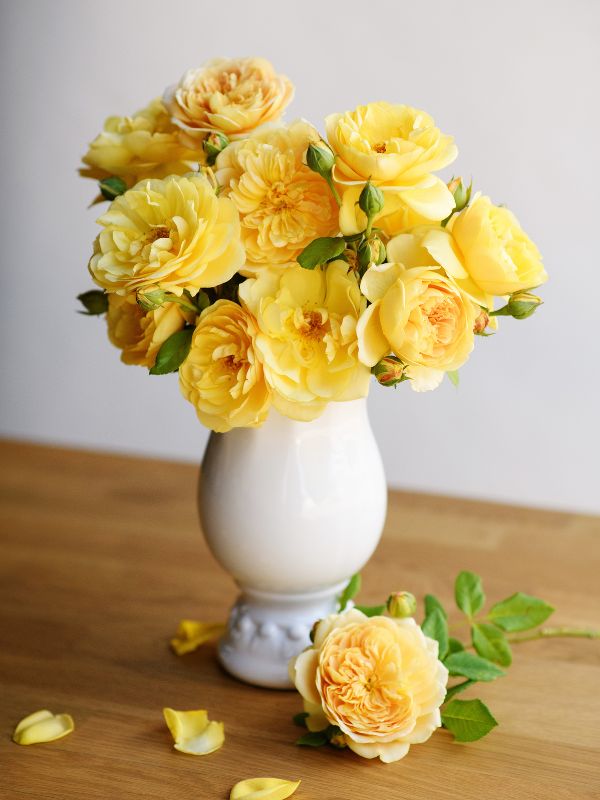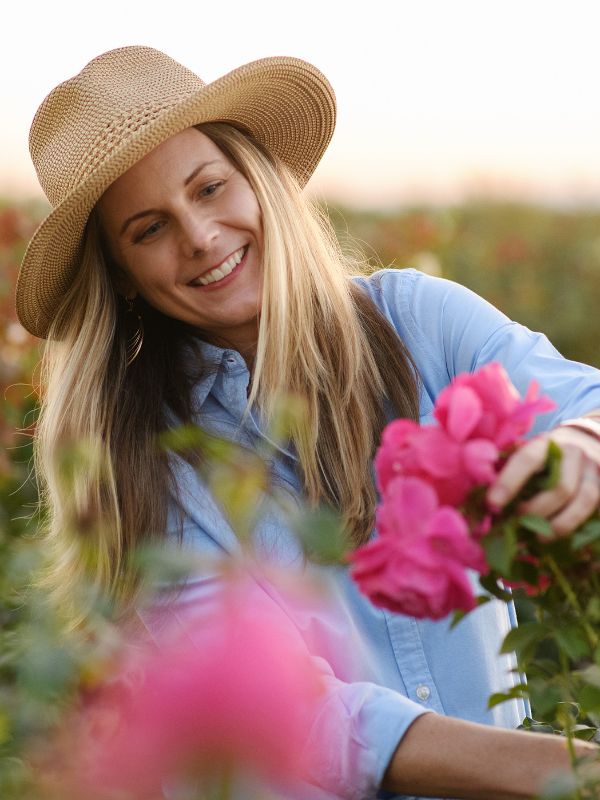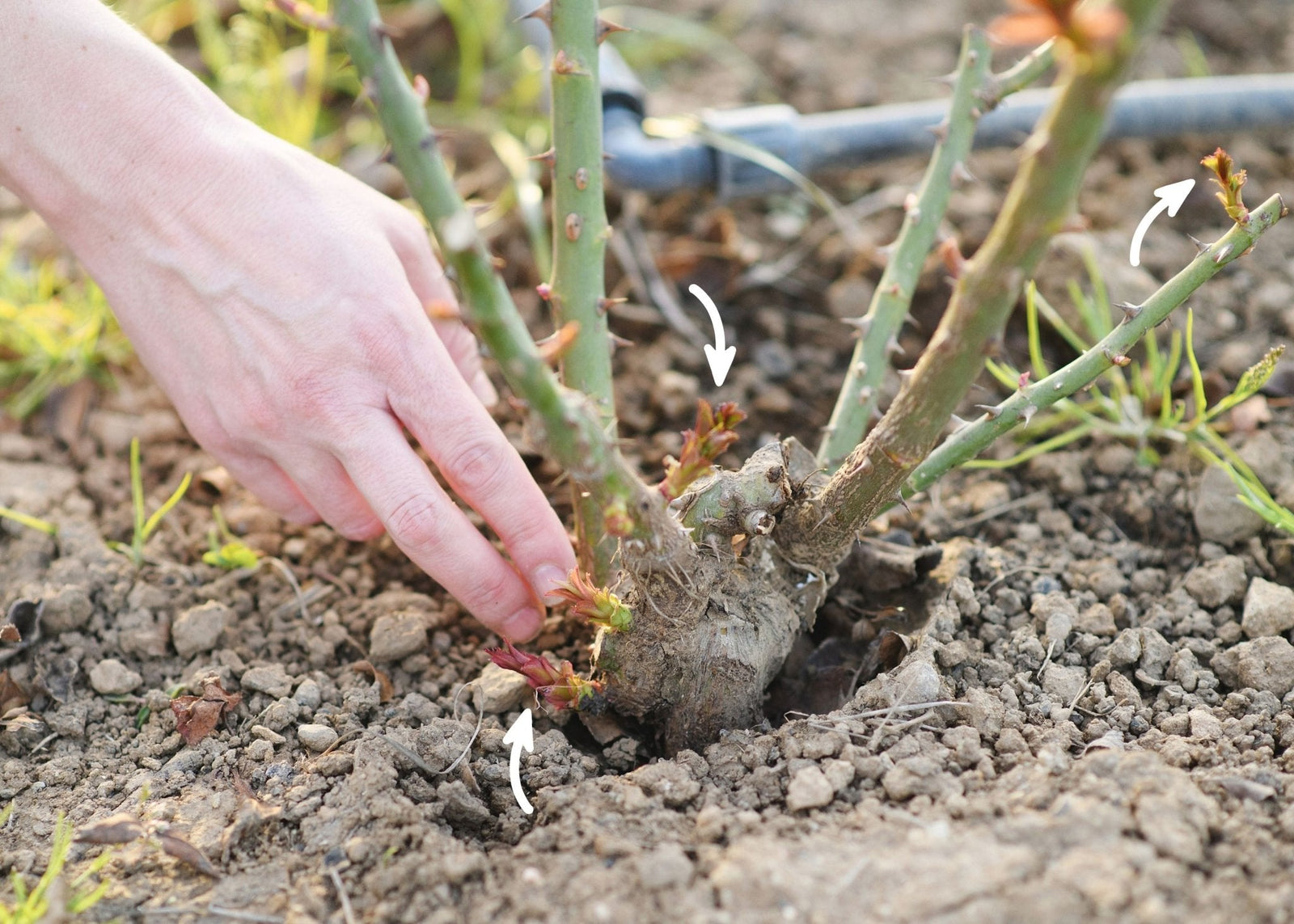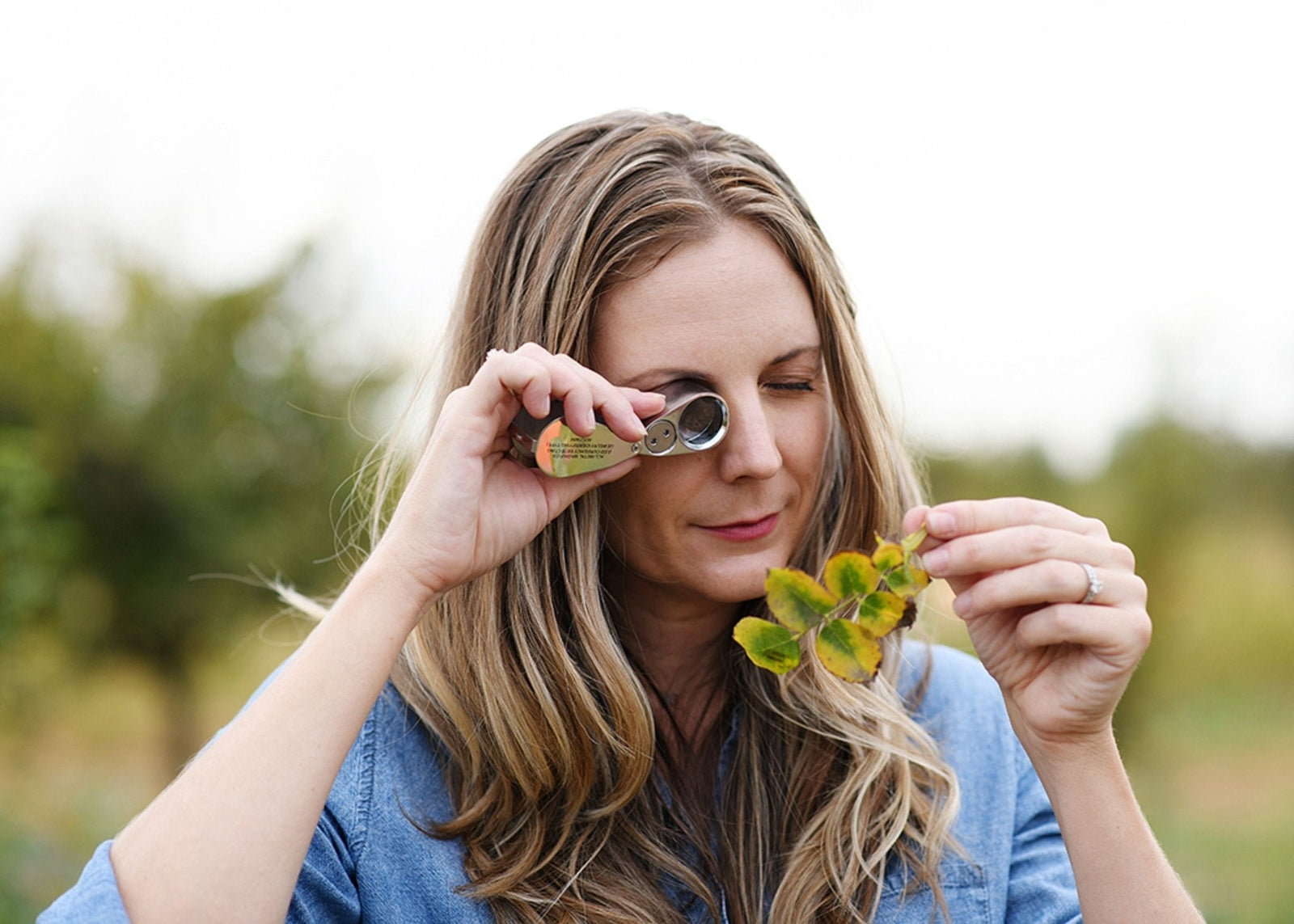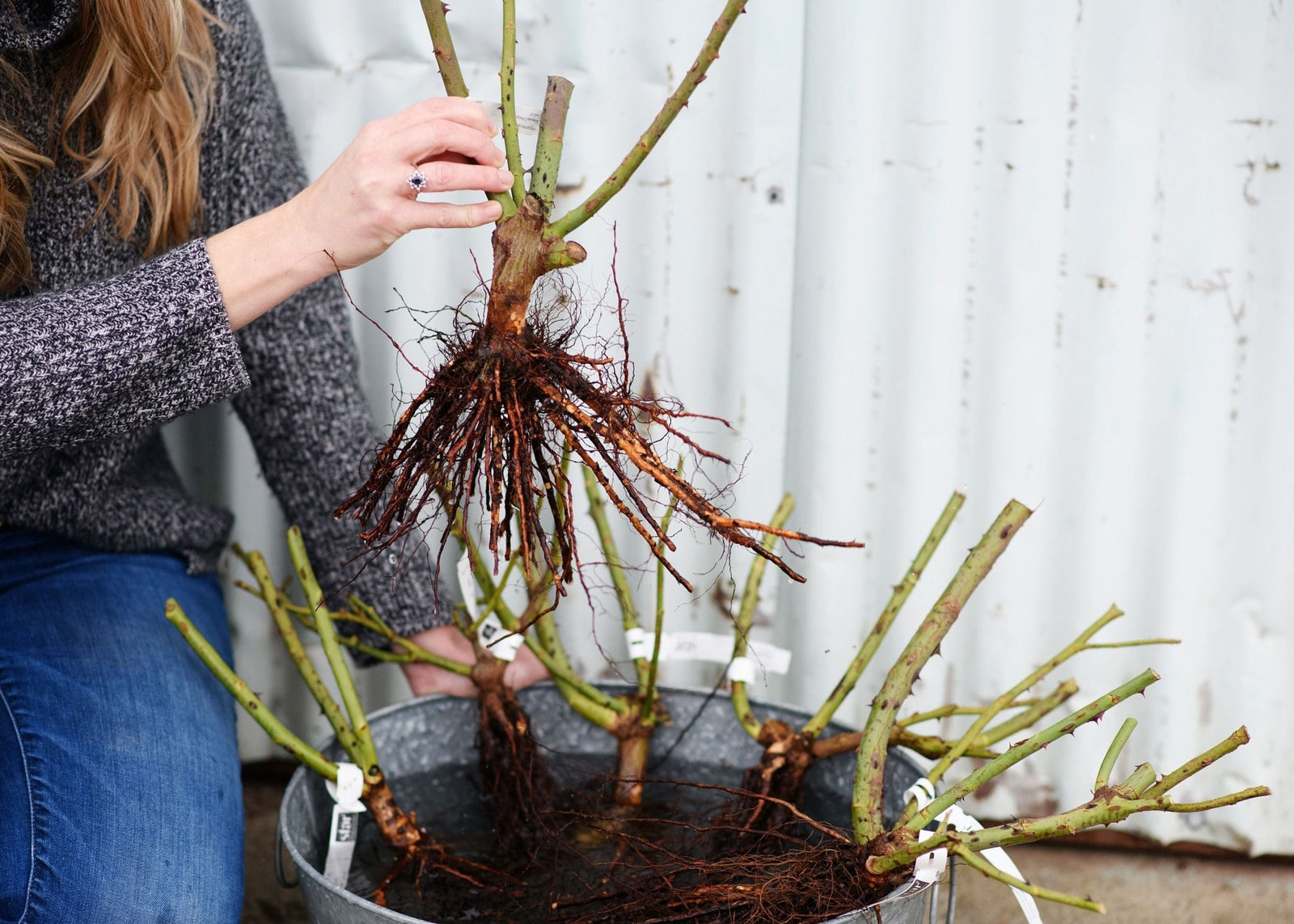If you’re new to growing roses, you might be wondering, “What does it mean for a rose to be own root or grafted?” Read below to learn about the difference between own root and grafted roses as well as which one you should choose for your garden.

Tools of the trade for preparing and planting bare root roses. My favorite rose gauntlet gloves and clippers. Grafted rose on left and own root rose on the right.
WHAT IS THE DIFFERENCE BETWEEN A GRAFTED AND OWN ROOT ROSE?
Grafted roses, also known as budded roses, are roses that have a top stock variety and a bottom stock variety. The shoots, or the canes, that grow above the ground are a different variety than the roots that grow below ground. The top stock is “grafted” or attached to the bottom stock so they grow together as one plant. But why? The bottom stock variety is grafted to the top stock to help the rose have improved hardiness, disease resistance, and resistance to adverse weather conditions. There are different types of rootstock grown for hardiness in North America including Dr. Huey, Multiflora, Fortuniana. Most of the roses in our bare root collection are grafted on Dr. Huey with a few on Multiflora. A grafted rose usually appears to have a round fist shape node at the base of the canes with a straight shaft below leading to the root system. This round node area is where the top stock and bottom stock are fused together.
Own root roses are roses grown from a single variety cutting that develops its own root system. Own root roses differ from grafted roses in that both their roots and shoots/canes come from the same variety of plant. The root structure on an own root often looks like twisted canes of an old tree. This “twisted” appearance is perfectly normal and the roots do not need to be untwisted at planting.
There is no one type that is “better” than the other, as both own root and grafted will grow beautiful hardy roses. When selecting your rose, it’s important not to focus only on the rootstock as there will always be exceptions to any best practices. (See below for advice on selecting a rootstock in colder growing zones.)
If you purchase from a reputable nursery, like ours, and they offer a selection of roses as own root or grafted, there is usually a reason why they offer certain varieties as own root and certain varieties as grafted. Some roses do not perform well on their own root and some do. Some are ok either way. At Menagerie Farm & Flower, we have already done the hard work for you by providing a rootstock option(s) that are best for each variety.
Grafted roses can have a long lifespan if properly cared for (and will certainly have a longer lifespan than if they are a variety that doesn’t grow well on its own roots). Own roots are usually very hardy in cooler climates, however this is where it’s important to consider the other attributes of the plant such as the zone rating. An own root plant rated to zone 7 will likely not be very hardy if planted in zone 4. Not sure what your USDA growing zone is - look it up here on the USDA Plant Hardiness Map.
Zone 3-5 Special Considerations: You can grow grafted roses successfully in zones 3-5, but it does require more winter protection and care to ensure the top stock variety does not dieback in cold winter weather and stays viable for the following year. If you’re new to growing roses in zones 3-5 and not sure how a grafted rose will do in your winter weather, I recommend buying one or two and trying them out for a season to see how they perform in your climate and location over a winter. If you don’t want to take a gamble on grafted, I recommend sticking to own root roses as you get your feet wet so your rose growing experience gets off to a good start!

I hope this helps you understand difference between own root and grafted bare root roses. When shopping for roses, I encourage to select any variety that speaks to you - the one that puts a smile on your face when you see it. Choose an own root or grafted rose while also taking other growing factors, like zone rating, into consideration too and you’ll be on your way to a beautiful rose garden come spring!
Photos By: Jill Carmel Photography
This post may contain affiliate links. I make a small commission if you purchase a product from the link. I only recommend products I love and use in hopes they will help you too!



